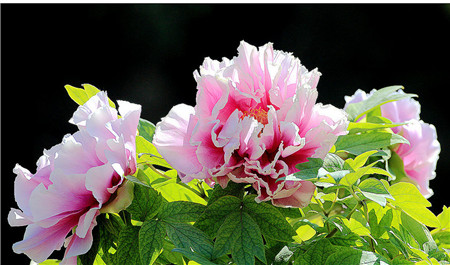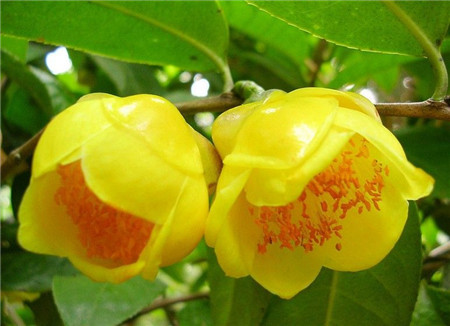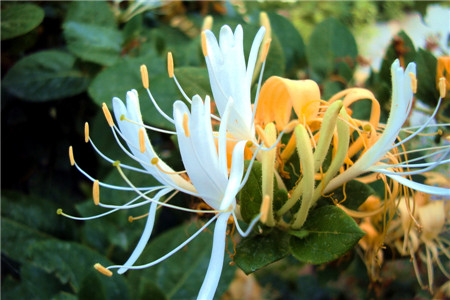How to plant peonies?
Although the peony is good-looking, it is not easy to grow. How to plant the peony? Today, Flower Encyclopedia will answer for you how to plant peonies.
1. Planting
Choose sunny, non-stagnant land, preferably Chaoyang slope, fertile soil, well-drained sandy loam. Turn over the land deeply before planting, the planting pit should be appropriately large, and the root of the peony should be stretched vertically into its hole, not the root. Planting should not be too deep, it is better to bury the roots just now. There are fewer potted plants.
2. Light and temperature
Sufficient sunlight is more beneficial to its growth, but it is not resistant to hot summer sun exposure, and the temperature above 25 degrees Celsius will make the plant dormant. The suitable temperature for flowering is 17-20 degrees Celsius, but it must be treated at a low temperature of 1-10 degrees Celsius for 2-3 months before flowering. The minimum capacity is-30 degrees Celsius, but the northern cold zone needs to take appropriate cold prevention measures in winter to avoid frost damage. The hot and humid weather in the south is extremely disadvantageous to the growth of peonies, so the cultivation of peonies in the south should give them specific environmental conditions.
3. Watering and fertilization
Water twice before planting. Irrigate once before the beginning of winter to ensure its safety through the winter. Supply water according to the dry and wet soil after the beginning of spring, but don't overwater it. Fertilizer was applied three times in the whole year, and the first time was pre-flowering fertilizer, and quick-acting fertilizer was applied to promote the flower to bloom. The second time was post-anthesis fertilizer, and the organic liquid fertilizer was applied once. The third time was autumn and winter fertilizer, which was mainly based on base fertilizer to promote the growth of the following spring. In addition, attention should be paid to weeding and weeding, and shallow ploughing and loosening soil can be done without weeds.
4. Shaping and pruning
After the flower fade, pick the flowers and prune in time, cut according to the natural growth of the tree and cut the desired tree, at the same time, in the pruning □, smear the wound anti-decay film to protect the wound □ to prevent the invasion and infection of bacteria. If the plant is low and the flowers are dense, it should be shorter and heavier in order to inhibit branch expansion and root tillering, and it is appropriate to retain 5-6 branches per plant.

5. Florescence control
Potted peonies can blossom during the Spring Festival through winter flowering treatment. 60 days before the Spring Festival, strong peony varieties with full scale buds (such as Zhao Fan, Luoyang Red, Sheng Danlu, GE Jinzi, Pearl Sand Base, Dazi Hu Hong, Mokui, Oolong Pengsheng, etc.) are selected to rise with soil, hurt as few roots as possible, hang them in a cool place for 12-3 days, and prune them. Each plant leaves 10 full branches with terminal buds, leaving the top buds, and the rest of the buds are erased. When potting, the size of the pot should match the plant to achieve a satisfactory plant type. After pouring water, normal management. Move it into a greenhouse of about 10 degrees Celsius 50-60 days before the Spring Festival and spray water 2-3 times a day to keep the basin moist. When the scale bud expands, it is gradually heated to 25-30 degrees Celsius, and the night temperature is not less than 15 degrees Celsius, so that flowers can be seen during the Spring Festival.
The planting method of how to plant peony flower
Peony is the second most famous flower in China, which has the reputation of being the king of flowers. Luoyang is one of the birthplaces of Chinese peonies and is famous for its peony flowers. Peony flowers are deeply loved by people for their bright colors and beautiful patterns. How to plant the peonies? Next, Xiaoqi shares the planting method of peony flowers.
Pictures of peony flowers
First, how to plant peony flowers
Peony is a deep-rooted deciduous shrub flower, which likes sunshine, cold resistance, cool environment and avoid high temperature and muggy heat. It is suitable for growing in loose, fertile and well-drained sandy soil. Therefore, the basin soil for the cultivation of peony flowers should be mixed with sand and cake fertilizer, or mixed with fully mature barnyard manure, garden soil and coarse sand at the ratio of 1:1:1.
Pictures of peony flowers
II. Planting methods of peony flowers
1. Planting: we should choose loose, fertile and neutral slightly alkaline loam for peony planting, and put the fracture, diseased roots and sterilization of the planted peony seedlings into a basin or pit prepared in advance, so that its roots can be stretched, and the seedlings will be gently shaken in most of the filled soil after the soil is firmly sealed.
2. Watering: the peony needs to be watered for the first time after planting, and the peony is taboo about stagnant water, so it needs to be watered when it is in the growing season.
3. Fertilization: one year after the peony flower is planted, it can be fertilized in autumn, mainly with rotten organic fertilizer. Then in the combination of loosening soil and so on, and in spring and summer is the use of chemical fertilizer, in the combination of watering before fertilizer and post-flower fertilizer. If it is potted, it can also be combined with watering to apply liquid fertilizer to it.
4. Pruning: when peony flowers are planted, about 5 branches will be left after spring germination, and then the others will be wiped out, so that the next year's flowers can be more brightly colored. In autumn and winter, we can also combine Qingyuan to cut off delicate, flowerless branches and leaves, and when potted, we can cut them into different shapes according to their own preferences.
5. Change the pot: when the peony of the pot has grown for three or four years, we need to add new fertile soil and large pots or separate plants for it in the autumn.
Pictures of peony flowers
The above is how to plant peonies and the methods of planting peonies. Friends who like peonies might as well learn to plant some at home.
The cultivation method of how to plant peony flower
There are many flower-loving friends around us. Peony is one of our favorite varieties. How to plant peony? Next, let's tell you how to cultivate peonies.
1. Temperature and light
Sufficient sunlight is beneficial to the growth of peony, but it is not resistant to hot summer sun, and the plant will be dormant when the temperature is above 25 ℃. The suitable temperature for flowering is 17-20 ℃, but it must be treated with low temperature of 1-10 ℃ for 2-3 months before flowering. The minimum capacity is-30 ℃, but appropriate cold prevention measures should be taken in the northern cold zone in winter to avoid frost damage. The high temperature and humidity in the south is extremely disadvantageous to the growth of peonies, therefore, the cultivation of peonies in the south need to give them specific environmental conditions in order to enjoy the beautiful peony flowers.
2. Watering
Whether watering is proper or not is a key issue in the success or failure of potted peonies. After coming out of the house in early spring, apply fertilizer first, then pour water through, loosen the soil after water infiltration, and maintain the humidity of the basin soil until budding. If the pot is too dry, you can water it again until it blossoms. It is advisable to keep the basin soil moist in the future. On rainy days in summer, it is necessary to dump the stagnant water in the basin in time to prevent rotting roots.
3. Fertilization
Peony is a fertilizer-loving plant. In order to make the peony flowers big and colorful and avoid the phenomenon of "blooming every other year", we must pay attention to rational fertilization. The newly planted peony does not need to be fertilized within half a year, but can not be fertilized until half a year later. Generally speaking, fertilizer should be applied at least three times a year. The first time is "pre-flowering fertilizer", which is applied in combination with "thawing water" when the leaves and expenses are extended after the soil is thawed. For the second time, "post-anthesis fertilizer" was applied within half a month, and this fertilization played an important role in restoring plant growth and promoting flower bud differentiation. The third fertilizer was applied before the beginning of winter, and this fertilization played an important role in enhancing the growth in the coming spring. In the first and second fertilization, the fertilizer was made a living by quick-acting fertilizer, and the third fertilization was mainly based on slow-acting base fertilizer.
4. Pruning
In order to ensure the beautiful plant shape, luxuriant flowering and robust growth of peony, it also needs to be reshaped and pruned. Potted peony pruning can be divided into winter pruning and spring and summer pruning. In spring, the remaining buds of potted peony should be selected, the excess buds in the rhizosphere should be erased, the introverted branches, cross branches and heavy branches should be cut off, and the weak branches and excess branches should be removed to ensure that the plant shape is beautiful, ventilated and transparent. The residual flowers can be cut off in summer, and the diseased and dead branches can be cut off after falling leaves at the end of autumn.
5. Insect pests
The common disease of peony is brown spot, the leaves appear yellow-green spots at the beginning, and then gradually expand to form brown or black spots. Bordeaux liquid can be sprayed 1-2 times a month, if the condition is serious, it can be sprayed 3 times. The seriously infected leaves should be cut off and burned to prevent Cheyenne. There is also a kind of root rot that specifically harms the roots of peonies. The condition is that the roots blacken and rot, hindering growth, and serious ones can lead to the death of pruning. To prevent the disease, it is necessary to check carefully when planting ramets. If you find that there is a diseased root, you must cut off and burn it, and sprinkle some sulfur powder in the planting hole when planting. The common pest is cotton-blowing insect, which can be sprayed with 1500 times of omethoate emulsion and coated with stone-sulfur mixture in winter or early spring, which also has a good control effect.
- Prev

Cultivation methods of Camellia
Camellia is a common flower in daily life. The cultivation methods of camellia are divided into ground-planted camellias and potted camellias, among which potted camellias are divided into garden cultivation and nursery cultivation. The cultivation methods of Camellia camellias can be divided into garden cultivation and nursery cultivation.
- Next

Cultivation techniques of Flos Lonicerae
Honeysuckle has strong adaptability, and the choice of soil and climate is not strict, and the sandy loam with thicker soil layer is the best. Hillsides, terraces, Weirs, dams and barren hills can all be cultivated. Propagation can be done by sowing, cuttings and root splitting. Bud and blossom on the new branch of the year. The soil is not strict and acidic.
Related
- Fuxing push coffee new agricultural production and marketing class: lack of small-scale processing plants
- Jujube rice field leisure farm deep ploughing Yilan for five years to create a space for organic food and play
- Nongyu Farm-A trial of organic papaya for brave women with advanced technology
- Four points for attention in the prevention and control of diseases and insect pests of edible fungi
- How to add nutrient solution to Edible Fungi
- Is there any good way to control edible fungus mites?
- Open Inoculation Technology of Edible Fungi
- Is there any clever way to use fertilizer for edible fungus in winter?
- What agents are used to kill the pathogens of edible fungi in the mushroom shed?
- Rapid drying of Edible Fungi

